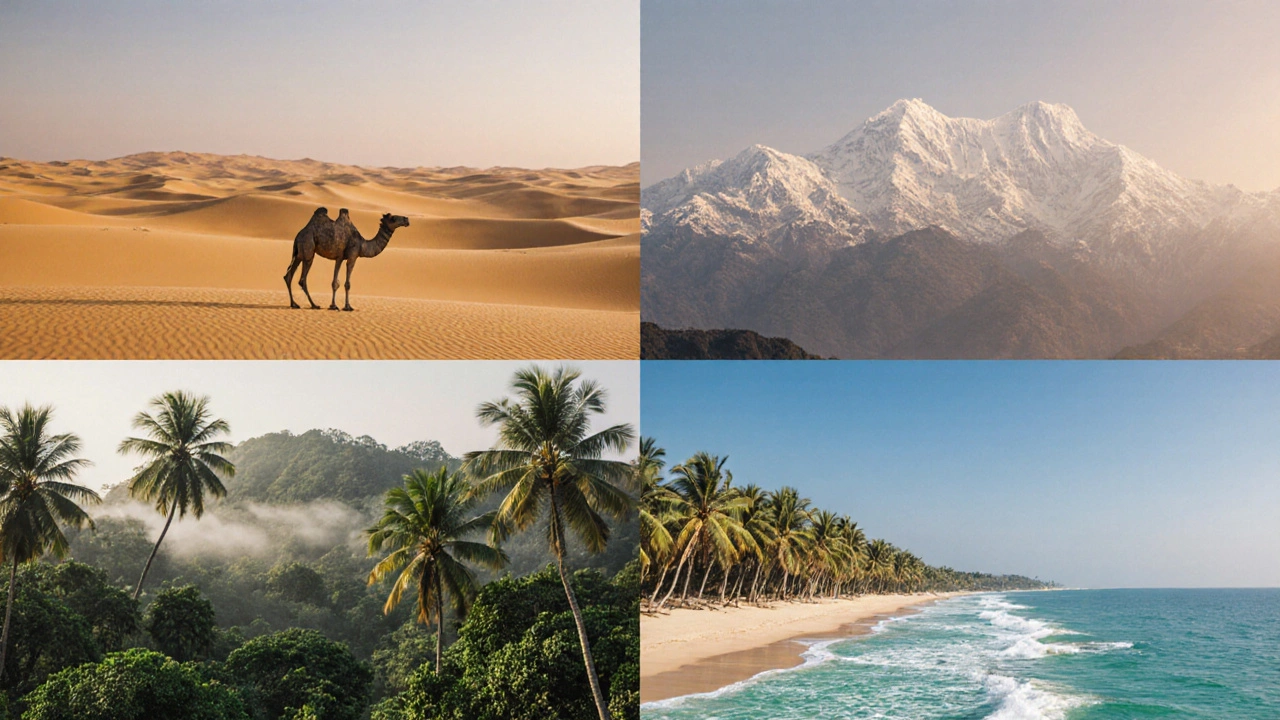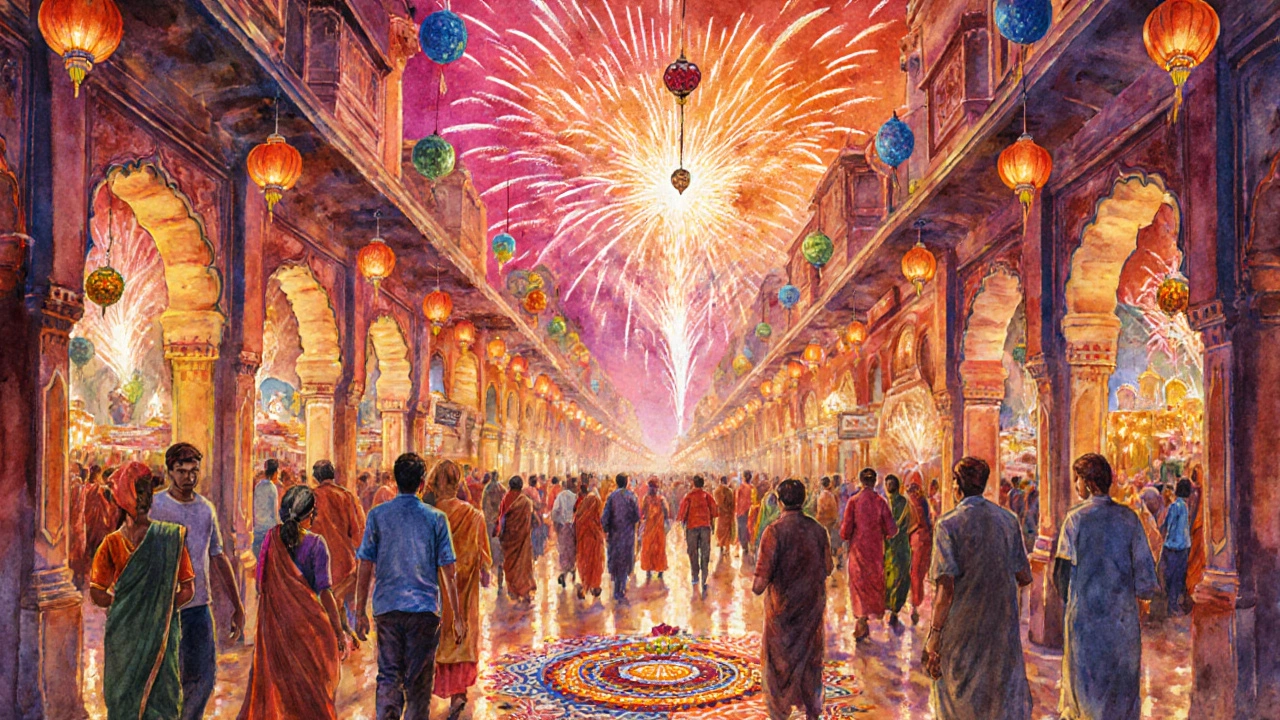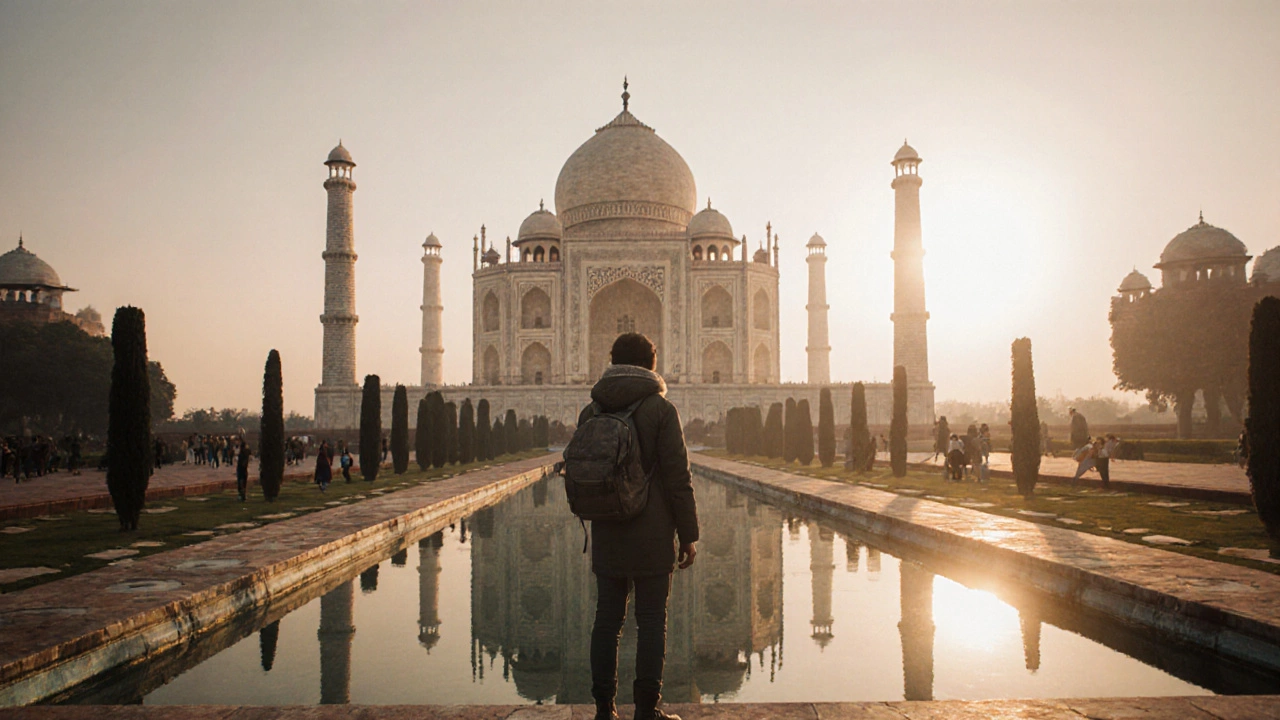Best Month to Visit India: Seasonal Guide for Travelers
 Oct, 13 2025
Oct, 13 2025
India Travel Season Selector
Find Your Perfect Travel Time
Select your preferences below to see the best months for your India trip.
Recommended Travel Time
India is a vast South Asian nation with climates that swing from tropical to alpine, creating a mosaic of travel experiences. If you’re wondering which is the best month to visit India, the answer hinges on the weather you prefer, the festivals you want to catch, and the activities you plan to do.
Quick Takeaways
- October‑November and February‑March offer pleasant weather across most regions.
- December is ideal for Rajasthan deserts and Goa beaches, while March‑April shines for Himalayan treks.
- Monsoon months (June‑September) bring lush green landscapes and discounted rates, perfect for wildlife safaris.
- Festival lovers should target September (Navratri/Durga Puja) and October (Diwali) for vibrant celebrations.
- Plan ahead for school holidays and local peaks to avoid crowds and high prices.
How India’s Climate Is Split
Understanding the country’s climate zones is the first step in picking a month. Most travelers think of India as a single weather pattern, but it actually breaks down into four major zones:
- Winter (December‑February) - cool in the north, mild on the coasts.
- Summer (March‑May) - scorching in the interior, hot in the south.
- Monsoon (June‑September) - heavy rains in the west, southeast, and Himalayan foothills.
- Post‑monsoon Autumn (October‑November) - comfortable temperatures, clear skies.
Each zone aligns with specific travel experiences, so match your interests to the season.

Month‑by‑Month Weather Snapshot
| Month | North India (Delhi, Agra) | West India (Rajasthan, Gujarat) | South India (Kerala, Chennai) | East India (Kolkata, Odisha) |
|---|---|---|---|---|
| January | 8‑15 | 12‑20 | 22‑28 | 18‑24 |
| February | 12‑20 | 15‑25 | 24‑30 | 22‑28 |
| March | 18‑27 | 22‑32 | 26‑33 | 24‑32 |
| April | 24‑35 | 28‑40 | 28‑35 | 28‑36 |
| May | 30‑40 | 33‑45 | 30‑36 | 30‑38 |
| June | 30‑38 (rain) | 30‑38 (rain) | 28‑33 (rain) | 28‑34 (rain) |
| July | 29‑36 (rain) | 29‑36 (rain) | 27‑32 (rain) | 27‑33 (rain) |
| August | 28‑35 (rain) | 28‑35 (rain) | 27‑32 (rain) | 27‑33 (rain) |
| September | 27‑34 (rain) | 27‑34 (rain) | 27‑31 (rain) | 27‑33 (rain) |
| October | 22‑30 | 22‑30 | 26‑30 | 24‑30 |
| November | 15‑25 | 15‑25 | 24‑28 | 22‑28 |
| December | 8‑18 | 12‑22 | 22‑27 | 18‑24 |
Temperatures are averages; local altitudes can shift them dramatically. Rainfall numbers drop sharply after September, making October‑November the sweet spot for most travelers.
Festival Highlights by Month
India’s cultural calendar is packed, and timing your trip around a major festival can turn a good vacation into an unforgettable one.
- Holi (March) - the colorful spring celebration in North India, especially in Mathura and Vrindavan.
- Rath Yatra (June‑July) - chariot procession in Puri, Odisha.
- Navratri/Durga Puja (September‑October) - nine nights of dance and worship, spectacular in Gujarat and West Bengal.
- Diwali (October‑November) - the festival of lights, illuminated markets in Delhi, Jaipur, and Chennai.
- Pushkar Fair (November) - livestock and cultural fair in Rajasthan’s desert.
Each festival draws crowds, so book accommodations early if you plan to be there.
What Activities Shine in Each Season
- Winter (Dec‑Feb): Desert safaris in Rajasthan, beach sun in Goa, and clear mountain views in the Himalayas.
- Spring (Mar‑May): Trekking in Ladakh and Sikkim, wildlife spotting in Ranthambore before the heat, and temple walks in TamilNadu.
- Monsoon (Jun‑Sep): Lush backwaters in Kerala, tea plantation tours in Darjeeling, and lower prices for many resorts.
- Autumn (Oct‑Nov): Ideal for city sightseeing, cultural festivals, and comfortable coastal cruising.
Pick a season that aligns with your must‑do list, and you’ll avoid the classic “too hot” or “too wet” complaints.

Practical Tips for Choosing Your Travel Month
- Check school vacation calendars in India and your home country - peak periods inflate airfare.
- Look up region‑specific weather alerts; the Himalayas can still get snowfall in January.
- Reserve train tickets at least 60 days ahead for high‑demand routes, especially during Diwali and Christmas.
- Pack layers - even in warm months, evenings in the north can be chilly.
- Consider travel insurance that covers monsoon‑related disruptions if you travel June‑September.
Checklist: Find Your Ideal Month
- Do I want festivals? → Target September‑November.
- Is wildlife a priority? → June‑September for lush forests, October‑November for better visibility.
- Prefer beach sunshine? → December‑February on the west coast, March‑May on the east.
- Planning high‑altitude trekking? → February‑April for stable conditions.
- Need a budget‑friendly trip? → Monsoon months offer lower prices and fewer crowds.
Answer these questions, and the best month for you will pop up instantly.
Frequently Asked Questions
When is the weather most comfortable across most of India?
October through November and February through March generally offer mild temperatures and low rainfall in the majority of regions.
Which month is best for a desert experience in Rajasthan?
Late November, around the Pushkar Fair, gives cool evenings, clear skies, and a vibrant cultural atmosphere.
Can I see the TajMahal without the crowds?
Visiting in early March or late October, right after sunrise, usually means fewer visitors compared to the peak winter months.
What’s the cheapest time to travel to India?
The monsoon period, especially July and August, sees lower accommodation rates and discounted flight fares.
Is it safe to travel during the monsoon?
Most major cities remain accessible, but mountain roads can be hazardous. Stick to well‑maintained routes and keep a flexible itinerary.